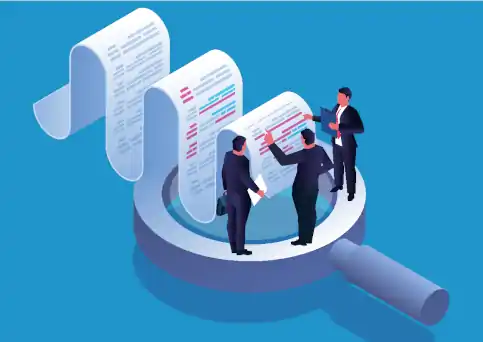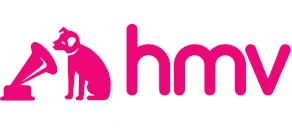More traffic = More sales
More sales = More profit
Simple huh?
But what else does more traffic mean?

More traffic = More sales
More sales = More profit
Simple huh?
But what else does more traffic mean?
Well, it means there’ll be more pressure on your servers, your payment gateways and your eCommerce administration, leading to overloaded websites and apps, resulting in slow performance, and ultimately, crashing your overwhelmed e commerce site completely.
If we’re continually looking into ways to drive more and more traffic into our online stores, to boost sales and profits without considering the pitfalls, are we just setting ourselves up for a fall? Well, without the right solutions in place, that’s precisely what’s going to happen.
If you sold 20,000 tickets for an event in a venue that only held 200 people, you know exactly how unhappy your customers would be and what their resulting e commerce behaviour might look like. The same goes for flooding an ecommerce website with visitors it can’t cope with or isn’t built to handle.
There’s far more to consider than the repair bill. The technical issues cost of getting your ecommerce website or app back up and running is probably the least costly of all the related losses resulting from such an issue.

Imagine you're about to buy a new computer, but when you reach checkout, a few issues arise, and you’re sent back to the start of your customer journey. Frustrating, right? You’d likely abandon the purchase and head to a competitor with a seamless eCommerce experience. But it doesn’t stop there. Once you've had a poor experience, chances are you won’t return to the original retailer. Now, consider the long-term impact—lost revenue from future purchases, missed impulse buys from email campaigns, and fewer referrals from social media and word of mouth.
This is where a waiting room can make all the difference. Without a waiting room, customers stuck in a crashed checkout page may never return. A waiting room ensures that high-traffic surges don’t drive customers away. Think of a waiting room as a safety net that holds customers in place rather than kicking them out of the buying process. Businesses that use a waiting room reduce frustration and prevent abandoned carts.
An eCommerce site without a waiting room is vulnerable to massive revenue losses. Studies show that downtime from a crash leads to 25% of total losses, and without a waiting room, those lost sales add up quickly. Imagine the impact over time—without a waiting room, every failed transaction means losing not just one sale but potentially years of repeat purchases. A waiting room keeps customers engaged rather than driving them to competitors.
When sites experience high traffic, a waiting room manages the flow, ensuring that no customer is unfairly cut off. A waiting room is essential in preventing revenue loss, and businesses without a waiting room risk long-term financial damage. The good news? A waiting room solution is easy to implement. With virtual waiting room software, companies can protect their revenue and brand reputation. Instead of letting website crashes cost millions, a waiting room keeps customers in the purchasing process. A waiting room isn't just a backup—it's a vital tool for any eCommerce business that wants to maintain customer trust and avoid financial setbacks.
‘A fabulous virtual waiting room solution with an amazing support team. Queue-Fair is seamless - really easy to set up and configure. For the limited quantity stock we want to sell - and not oversell - the customer experience is completely improved. No more site slow downs or trouble adding to baskets. Perfect. Queue-Fair meant we felt like we were in control on our key trading day Black Friday. The business really likes it. Queue-Fair was really successful, it works really well. Support has been brilliant - every question has been answered super quickly. There are lots of events coming up where we want to use Queue-Fair too.’

‘Brilliant. I had a sleepless night worrying the website was going to crash again after the last time we tried to run our popular promotion without Queue-Fair. I'm so delighted to have found your solution. Thanks for your responsiveness - it is hugely appreciated that you got this set up for us in less than a day, and it worked perfectly. Awesome. Lovely stuff. Golden. Thanks again; this means the world to me. I'm going to sleep well tonight. Legendary.’

‘An easy-to-use tool and a responsive team. Every Saturday we offer a limited number of products for pre-order, creating a massive and rapid overload of the server. We had to find a solution to absorb the traffic and make our customers' shopping experience more fluid. The tool was easy to set up on my website. Their documentation is complete and accurate. ’

‘Everything worked perfectly! I'll use it each time we get a traffic spike to not lose any visitors. Queue-Fair is the cheapest solution on the market. Literally few min to install. Great support and really good reactivity. Easy to edit pages. Best bang for your bucks you can get to handle your critical event, I was able to handle more than 10,000 visitors traffic spike from TV show flawlessly.’

‘No nonsense, cost effective queuing system that works. Queue-Fair has helped us both with specific product launches and day-to-day traffic peaks. It's working seamlessly for us - when we take a trial of any technology, we look to make sure a) that it works and b) is cost effective, and Queue-Fair is both, and I'm very happy to continue using the excellent service. We looked at several options but Queue-Fair was the clear winner in terms of price, and it's flawless.’

‘An excellent solution to handle situations of high traffic. The solution is easy to install. The back office panel has many options to customize everything and give you every option you could need. I had a good experience installing, setting, customizing and monitoring the queue, and every time I need to handle a large amount of trafic on my site I know I can use this solution.’

‘We are very glad to have Queue-Fair as our Waiting Room partner for the three big iPhone launch events. Our website did not crash! We even went beyond our Sales Target, thanks to Queue-Fair! The Queue-Fair platform is user-friendly - very easy to use - and the data reports gave us meaningful insights for our future projects. We are very happy to have them as our partner :) Queue-Fair will surely be our only Waiting Room recommendation to our dear friends. More power Queue-Fair! Good job!’

‘Perfect service that helped us with our busiest time of year. They were a pleasure to deal with, providing flexibility where we needed it and excellent support with fast response times. The service precisely fit our needs.’

‘The perfect solution for the release of our limited edition figurine! Queue-Fair is very easy to implement and we were well supported and guided in setting up the parameters. The real-time reporting is great and allows us adjust our parameters during the event without crashing our server. We are very satisfied and plan to use Queue-Fair for our future releases.’

‘We needed a solution for Black Friday! Queue-Fair was happy to suit a solution for our need for this occasion, offering a great rate and excellent customer service. We could set up our own personalized waiting page room, our own entrance rate, all well-tailored to our measure. If you need a tailor-made solution that won't empty your pockets, Queue-Fair is the way to go!’

‘A Reliable Solution for Seamless Customer Flow Management. We've had the opportunity to use Queue-Fair with several clients, and we couldn't be more satisfied with the results. Queue-Fair excels> in providing a seamless user experience, making it a reliable tool that’s easy to integrate and use. The Queue-Fair support team was responsive and highly knowledgeable, always quick to assist when we needed them. The product quality shines through. Queue-Fair effectively solved the challenge of managing high-traffic surges, ensuring that our clients' websites could handle large volumes of users without compromising performance or user experience.’

‘It just works! That was the easiest launch we've had this year by some way. We sold out of our four main products and made 20% more than projected. The queue system enabled people to feel they had more time to shop so they added other items to their basket. Watching our launch in real time has given us a major insight into our future product launches too.’


The Problem with Peak-Time Online Traffic Peak traffic shouldn’t be an issue. In fact, businesses should capitalize on these high-demand periods to maximize sales in eCommerce, ticket onsales, and product launches. Unfortunately, as we’ve seen, too much of a good thing can lead to major disruptions.
Every website has a limit to how much incoming traffic it can handle before performance starts to suffer. If a site isn’t equipped for handling surges, excessive demand can overwhelm the system, leading to crashes, lost sales, and a poor customer experience. Overloading the system can cause pages to crash, creating frustrating downtime that impacts both revenue and brand trust.
So, how do we prevent this?
The first instinct is to simply increase website capacity.
That’s a solid approach, but let’s consider the reality: if peak traffic spikes only happen once a month, during the holiday shopping season, a Black Friday sale, or a big-ticket event, then the extra capacity you’re paying for sits unused most of the time. Even major retailers struggle with these seasonal surges. Beyond the high costs of server scaling, it’s still not a complete solution. No matter how much you plan, an unexpected spike can still bring down your site. Without an effective strategy for managing traffic, even the most robust system can fail under pressure.
A Smarter Approach to Managing Traffic.
Rather than overpaying for excess server capacity, businesses need a smarter way to control traffic during peak times. This is where an online waiting room comes in. By using a waiting room page, businesses can control traffic in real time, ensuring a smooth customer experience without the risk of crashes. An online waiting room does more than just prevent downtime—it improves the customer experience by allowing users to hold their place in line rather than getting kicked out of the site entirely. When it comes to customer experience, frustration-free transactions lead to higher conversions and long-term loyalty. Instead of wasting money on unused resources, implementing a scalable solution for managing traffic is the key to keeping your site running smoothly. That’s why we built a better, more cost-effective alternative.
We’ve spent a lot of time studying how site visitors react to waiting—whether in real life or online. The psychology behind queuing is remarkably similar in both cases, and understanding it is crucial to providing a smooth experience.
People are generally willing to wait, as long as they feel the process is fair and transparent. When a product or service is worth it, eager customers will stay in line. The problem arises when they feel ignored, uncertain, or lost in the system—left wondering if they'll ever reach their destination.
That’s where a virtual waiting room solution comes in. It ensures that customers are informed, engaged, and reassured every step of the way, rather than frustrated by unexpected site crashes or endless waiting.
Here’s what our online queuing and virtual waiting rooms offer your customers to keep them feeling important and cared for throughout the process.

Keeping site visitors updated throughout their wait is key to a positive experience. With clear communication, they can see their exact position in the queue, track progress, and receive an estimated wait time—making the process feel predictable and fair. This is just as important as preventing site crashes in the first place. By planning ahead for sudden traffic peaks, businesses can ensure that their website remains stable, even during peak traffic times. Configuring a system that properly handles web traffic prevents site crashes and protects the brand’s reputation.
An online waiting room isn't just about preventing downtime—it’s about delivering a seamless experience for site visitors. With an estimated wait time clearly displayed, customers feel valued and in control, rather than lost in a digital void. Instead of risking lost revenue due to peak traffic times, implementing a virtual waiting room solution ensures that eager customers can complete their purchases without frustration. The result? A more reliable website, better customer satisfaction, and a stronger brand reputation.
Testing your site and its systems will help you determine the limits of your operation. It will also show the points in the sales journey where your virtual queues need integrating. Managing this during a simulation is far better than waiting for the worst-case scenario to kill your servers in real-life. Understanding your site or app’s capacity will determine the optimum configurations for your queues—well within the limits of your system and integration with payment gateways.
So, your customers are happily waiting in line because they can see their progress, and they know their turn is approaching at an appropriate rate. What can you do to improve their user experience and feel further invested in your brand?
Your virtual waiting room gives you an opportunity to cross-sell, up-sell, reward them for their patience, and introduce them to products they might have missed or not considered, all while maximising website speed. You can entice them to join mailing lists, sign up for discount codes, or become VIP customers.

Now you’re equipped to deal with all the website traffic surges the web can throw at you, nothing is stopping you from driving as much new custom your way as you can. And while your web and app guests are pre-occupied with all the added benefits of choosing your business, they’re not thinking about being stuck in a queue.

This is merely a small selection of benefits for your website's performance during holiday season or other peak times. With a vast list of advantages saving you time, money, and, most of all, customers, our online queuing systems are perfect solutions to avoid ecommerce website crash on your site or mobile app.
Let’s face it, there’s one adage that has served us well for hundreds of years, and in this scenario, it’s just as relevant—prevention is so much better than a cure.
Invented and patented in 2004, Queue-Fair is the original Virtual Waiting Room, providing online queue management for busy websites and apps.
2024 The Fair Queue People Ltd. - All Rights Reserved.
Part of the Orderly family of queue solutions - OrderlyQ - OrderlyStats - WeQ4U